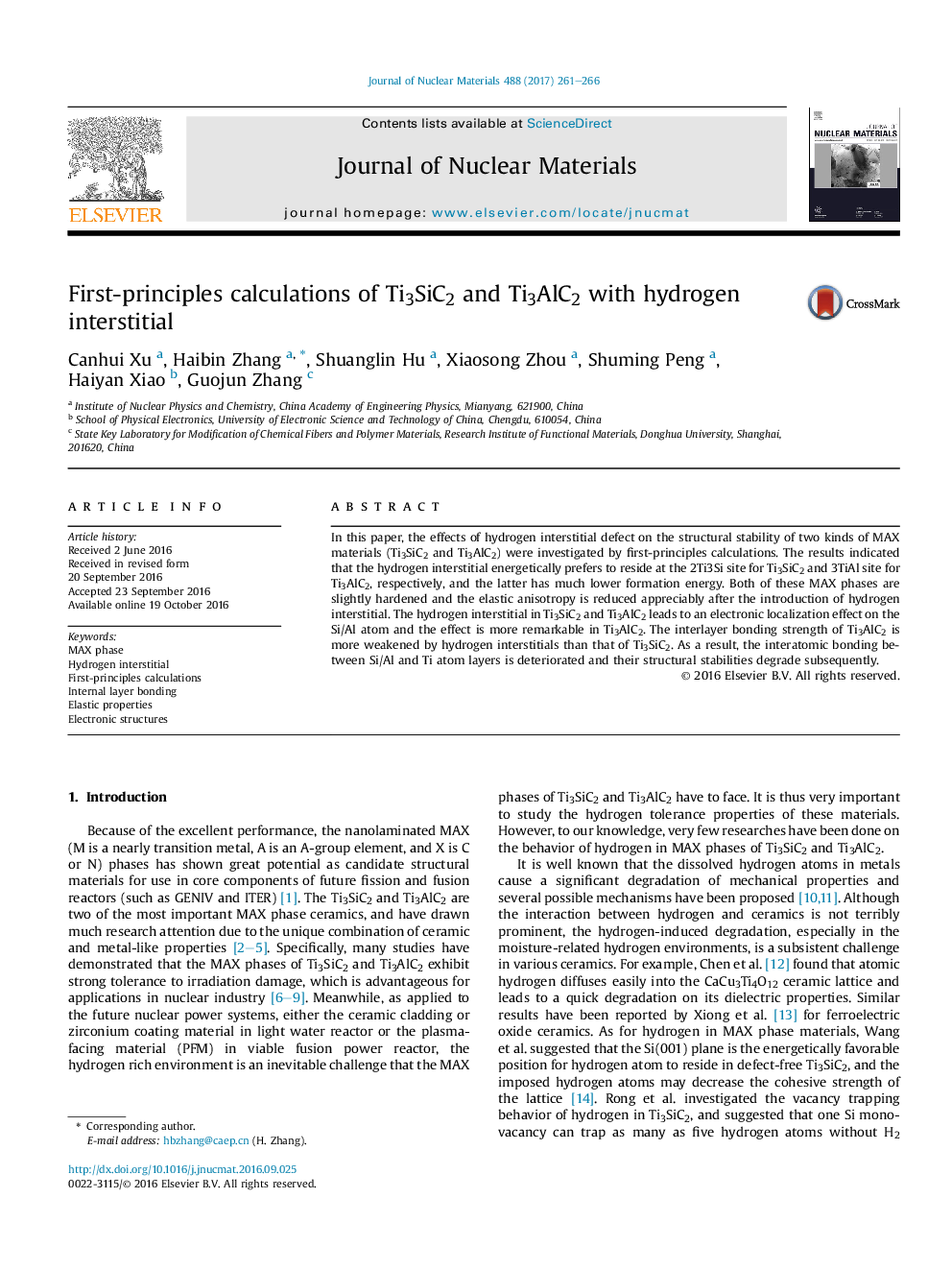| Article ID | Journal | Published Year | Pages | File Type |
|---|---|---|---|---|
| 5454200 | Journal of Nuclear Materials | 2017 | 6 Pages |
In this paper, the effects of hydrogen interstitial defect on the structural stability of two kinds of MAX materials (Ti3SiC2 and Ti3AlC2) were investigated by first-principles calculations. The results indicated that the hydrogen interstitial energetically prefers to reside at the 2Ti3Si site for Ti3SiC2 and 3TiAl site for Ti3AlC2, respectively, and the latter has much lower formation energy. Both of these MAX phases are slightly hardened and the elastic anisotropy is reduced appreciably after the introduction of hydrogen interstitial. The hydrogen interstitial in Ti3SiC2 and Ti3AlC2 leads to an electronic localization effect on the Si/Al atom and the effect is more remarkable in Ti3AlC2. The interlayer bonding strength of Ti3AlC2 is more weakened by hydrogen interstitials than that of Ti3SiC2. As a result, the interatomic bonding between Si/Al and Ti atom layers is deteriorated and their structural stabilities degrade subsequently.
